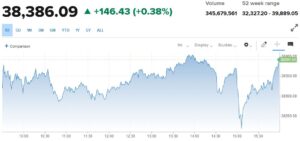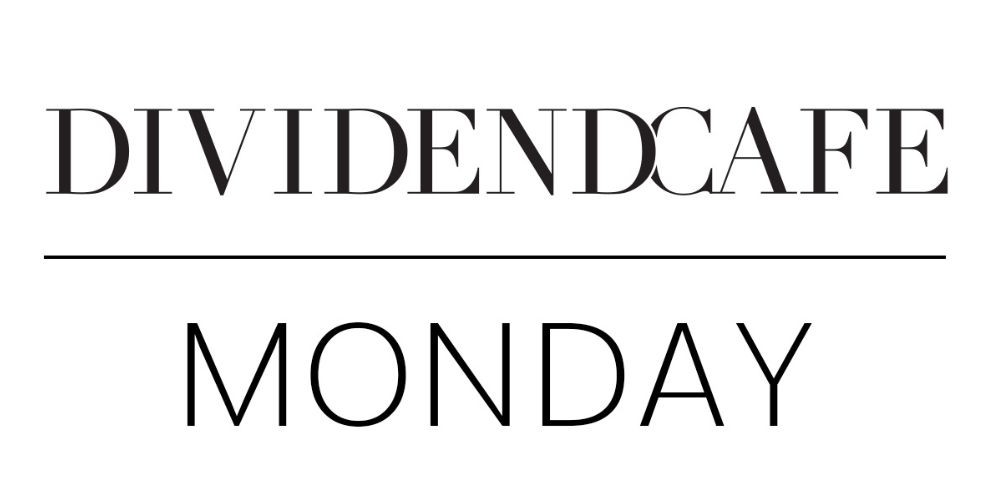Dear Valued Clients and Friends –
First things first – beginning tomorrow, the Tuesday/Wednesday/Thursday email hitting inboxes for Dividend Cafe subscribers will bring back a daily What’s on David’s Mind section (or What’s on Brian’s Mind, depending on who is running point). Thank you all for your very kind words on the new Dividend Cafe site and the adjustments we have made to content delivery. We are getting really close to happy with the programming!
Dividend Cafe looked at buybacks and dividends, the truth about market volatility, the national debt, the state of China, and the President’s role in the economy. The written version is here (my favorite), the video is here, and the podcast is here.
I was on Yahoo Finance Friday talking about everything and on Forbes TV specifically talking about the energy sector.
Off we go …
|
Subscribe on |
Market Action
- Markets opened up this morning after a strong week last week and stayed up throughout the day despite a drop late day that was entirely erased by the close.
- The Dow closed up +146 points (+0.38%), with the S&P 500 +0.32% and the Nasdaq +0.35%.

*CNBC, DJIA, April 29, 2024
- Google has joined Mag7 compadre, Facebook (Meta), in paying out a small dividend. Once unmentionable in Silicon Valley, these cooler-than-Fonzie beacons of no dress code have joined the fray of dividend payers (albeit at paltry levels, 0.5% and 0.4% annualized, respectively) at last, apparently suggesting that sometimes a distribution at half of the tax rate can serve the needs of executives shareholders.
- What is the downside of a huge spurt in earnings growth? Base effect. Mag 7 had huge earnings growth last year and so far this year, but then further out, you start comparing growth to the year that just had the big growth. And what is Mag 7’s annualized earnings growth projected to be by the end of the year? 14%, less than half of the 30% it has done this last year, and basically in line with the market (only at more than double the valuation).
- The ten-year bond yield closed today at 4.61%, down six basis points on the day.
- Top-performing sector for the day: Consumer Discretionary (+2.03%), w/ Utilities +1.39% (a little risk-on, a little risk-off).
- Bottom-performing sector for the day: Communication Services (-2.06%).
- Some asked, in light of my summary last week, how the stock market has generally done in the aftermath of various geopolitical events and what that looked like for Gold. Was there an immediate hedge benefit or antifragility to holding gold in the midst of geopolitical disruption?
- Gold was up over 12% in the 90 days after the Hamas attack on Israel.
- It was down 10% 90 days after the Lebanon War.
- Gold was up 5% after the Iraq War started in 2003.
- It was down 5% after the Russian invasion of Ukraine.
- It was flat 90 days after 9/11.
- It was flat 90 days after the 1990 Gulf War.
- Fund flows had just started to pick back up into equities (ETFs and mutual funds), and we started to see a little volatility in April. I am a contrarian through and through, but there has been something about the data of fund flows that has been quite unreliable for a long time, and I think it has to do with ETFs and the mechanical challenges in tracking. Sentiment has been a better indicator than conflicting fund flow data for some time now (in terms of contrary indicators).
- The Yen did hit a 34-year low against the dollar earlier today, and then rallied a few percent off of that number. These are wild and violent swings up and down right now and not good to be in the way of.
Public Policy
- The Wall Street Journal ran a story Friday suggesting that the Trump campaign was drawing up plans to “blunt” Fed independence should he win a second term. The article did not provide any sources, any names, or any specifics about who had supposedly said any of this. I, believing the idea of the President telling the Fed chair what rate policy should be to be unforgivable, reached out to three different sources of mine who are about as close as one can be to the Trump economic team (some past, some present, and some future). Not a single one of them had ever heard such a thing or had been asked for their take on the article. #Journalism
- All that said, the Fed is subject to political influence now. Making it explicit and at the level the article stated would undermine the credibility of monetary policy in a way current Fed critics can’t even comprehend. But I do believe the story to be utter hogwash (which is different than saying that there wasn’t somebody in Team Trump who wanted it planted for some reason).
Economic Front
- The big economic news last week was the 1.6% annualized real GDP growth for Q1 when +2.5% had been expected. The 3.4% of Q4 (again, all these numbers are annualized, which is just how they get discussed) was not going to repeat itself, but 1.6% vs. 2.5% projected and 2.7% in the Atlanta Fed’s GDPNow model was a big step down.
- The positive side is that manufacturing appears to be picking up, New Orders are on the rise, and low inventories now mean more manufacturing later.
- Net exports were the biggest drag (-0.9%), and, as is almost always the case, consumption was the largest contributor (+1.7%). Capex contributed just +0.4%.
- The Personal Consumption Expenditures (PCE) was up +2.7% year-over-year last month, matching expectations.
- Personal Income rose +0.5% in March, in line with expectations.
- 54% of people worked at firms with less than 500 employees in 1980. That number is just over 46% now.
- The fertility rate in the U.S. dropped to 1.62 last year, the lowest on record. Our fertility rate has been below the 2.1 replacement level for 17 years now.
Federal Reserve
- The futures market has already changed dramatically in full-year expectations for 2024.

- The Fed meets tomorrow and Wednesday with a Powell presser on Wednesday. No rate change will be forthcoming this week but some language about the future will be. And markets will get silly.
Oil and Energy
- WTI Crude closed at $82.73, basically flat on the day.
Against Doomsdayism
“Those that say that individuals are not capable of changing anything are only looking for excuses.”
~ Vaclav Havel
Ask TBG
| “Could you say a little about asset allocation for the retirement years? Specifically, how do you treat social security, pension and similar payments? Can these be viewed as a proxy for fixed income, thereby allowing more room for equities in your asset allocation for your investment portfolio?” ~ Sarah E. |
| I understand the concept you are describing, but the issue really comes down to vocabulary. When we talk about “asset allocation,” we are talking about assets being allocated, and social security and pension payments are not assets. We generally view the role of portfolio management to be about managing a portfolio, so we do not pretend things outside the portfolio are part of it. And yet, what the allocation should be is, itself, a by-product of a big picture (a plan) and that plan factors in all circumstances. As a general rule, we run low on Fixed Income for a lot of reasons. But it is not because we view other income sources as a proxy in the portfolio, because they are not. Each scenario is very carefully customized for each client’s situation. |
On Deck
- Tue/Wed/Thurs recaps are coming in the next three days, as described at the top.
Off to Florida for meetings tomorrow. Reach out with questions and to all a good night!
With regards,
David L. Bahnsen
Chief Investment Officer, Managing Partner
The Bahnsen Group
www.thebahnsengroup.com
The Dividend Cafe features research from S&P, Baird, Barclays, Goldman Sachs, and the IRN research platform of FactSet.



